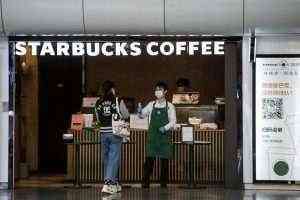
All examples are hypothetical interpretations of situations and are used for explanation purposes only. The views expressed in OpenMarkets articles reflect solely those of their respective authors and not necessarily those of CME Group or its affiliated institutions. OpenMarkets and the information herein should not be considered investment advice or the results of actual market experience. Neither futures trading nor swaps trading are suitable for all investors, and each involves the risk of loss.
Stock Market News Today: Santa Claus Rally Remains Elusive – Markets Insider
Stock Market News Today: Santa Claus Rally Remains Elusive.
Posted: Tue, 27 Dec 2022 08:00:00 GMT [source]
There are some hopes of a trade-war truce when President Donald Trump and President Xi Jinping of China meet at the G-20 summit in Argentina at the end of November. But the lack of a trade deal or even a cooling of tensions before tariffs are set to escalate on Jan. 1 could result in an ugly start to 2019 for equities in the U.S. and globally. Cramer said he thought Fed chief Jerome Powell “threaded the needle” during his Wednesday press conference and helped spark the afternoon stock rally. It is worth noting that the final week of the calendar year normally trades on lower volume than any other week. You should always conduct your own research before making any investment or trading decision.
Santa Claus Rally
According to The Stock Trader’s Almanac, the S&P 500 has gained an average of 1.3% since 1950 during the Santa Claus Rally periods. More recently, since the inception of the SPDR S&P 500 ETF Trust (SPY) in 1993, the Santa Claus Rally has produced gains 18 out of 27 times, or about 67% of the time. According to Gordon Scott, a member of the Investopedia Financial Review Board, since 1993 all other six-day periods produced positive SPY returns 58% of the time. Several theories try to explain the Santa Claus rally, including investor optimism fueled by the holiday spirit, increased holiday shopping, and the investing of holiday bonuses.
Bitcoin Santa Claus rally unlikely, according to on-chain and derivatives data – Cointelegraph
Bitcoin Santa Claus rally unlikely, according to on-chain and derivatives data.
Posted: Thu, 15 Dec 2022 08:00:00 GMT [source]
Investing involves serious risks and past performance is no guarantee of future performance or success. This is not a solicitation or an offer to buy or sell securities and nothing contained herein should be interpreted as a recommendation or research regarding any investment or investment strategy, legal or tax advice. Perhaps Best investment opportunities it’s optimism over the coming year, increased holiday spending, or maybe it’s a derivative of “tax-loss-selling season,” when institutional and retail investors sell failing holdings to reduce their capital gains. Those numbers illustrate the risk of investing based on calendar theories like the Santa Claus Rally.
Omicron casts a cloud on the Santa rally
Trade fears could reach an inflection point as we approach the end of 2018, she says. We can certainly debate whether any Street denizens are good enough to get something besides coal during the holidays. Regardless, historical data supports https://investmentsanalysis.info/ the likelihood of a stock-market rally, often called the Santa Claus Rally, in the closing days of a calendar year and the first days of a new one. This year, however, a visit from the jolly man in red might not be in the cards.
Swaps trading should only be undertaken by investors who are Eligible Contract Participants (ECPs) within the meaning of Section 1a(18) of the Commodity Exchange Act. Futures and swaps each are leveraged investments and, because only a percentage of a contract’s value is required to trade, it is possible to lose more than the amount of money deposited for either a futures or swaps position. BrokerTec Americas LLC (“BAL”) is a registered broker-dealer with the U.S.
- The Federal Reserve is poised to continue its cycle of raising interest rates during a policy meeting next week.
- This material may contain data, links or other content from third-parties.
- Historically, this seven-day period has brought good news for investors, giving them another reason to cheer during the holiday season.
- That said, the media may loosely label what it refers to as a Santa Claus Rally that starts as early as Black Friday (the day after Thanksgiving) and continues throughout the month of December.
But both time periods show negligible returns at best on average, making the Santa Claus rally something of a myth, just like the jolly old elf himself. It is the tendency for the market to rise in the last five trading days of the current year and the first two days of the new year. First discovered by Yale Hirsch of “Stock Trader’s Almanac,” it has produced positive returns 34 of the past 45 years for an average return of 1.4%.
Given the small sample size, the rate of Santa Claus rallies during recessions is roughly comparable to the typical rate of 79%. The window of time for the so-called Santa Claus rally is technically the final five trading days of a calendar year and the first two in January. Since late 1928, the S&P 500 has been positive in that stretch 78.5% of the time, according to Bank of America. The best Santa Claus rally definition is that stock markets post positive results in the immediate run-up to Christmas and the very start of the new year. By comparison, S&P 500 returns were a much smaller 0.24% during all other seven-day trading periods dating to 1950, Batnick said. Investment advisory services offered through Facet Wealth, Inc.(“Facet”), an investment adviser registered with the Securities and Exchange Commission (SEC).
The ‘Santa Claus rally’ defined and the chances it occurs this year on Wall Street
Researchers have suggested a variety of theories as to why the Santa Claus rally happens. Some cite a general feeling of optimism and the investment of holiday bonuses. Others offer more concrete reasons, including tax considerations or the idea that more bullish retail investors tend to take control of the market when institutional investors go on vacation over the holidays. While the exact reasons a Santa Claus rally does or does not occur are difficult to determine, SmartAsset decided to examine how often these rallies happen and their typical magnitude. Some believe that the rally is caused by the temporary bullish optimism of investors relaxing with family or from retail investors investing their holiday bonuses. There are also more general calendar trends called the ‘holiday effect’ or the ‘long-weekend effect’ where the stock market is theorized to perform better than average before holiday periods.
Tom Stevenson, an investment director at Fidelity International isn’t sure Santa will be making his annual visit this year. “Global equities have delivered an average capital return of 1.68% in the month of December over the last forty years, rising to 1.85% when reinvested dividends are taken into account,” he said. According to Jason Hollands, managing director of Bestinvest, a London-based investment company, there is “compelling evidence” to support the idea of a Santa rally. “By way of comparison, over the entire 30 year period, the S&P 500 Index itself has only generated an average annualised return of 7.52%,” it added. Seasonax found that the Santa rally begins on 15 December, with prices often pulling back prior to that date. This phenomenon is usually discussed during the early weeks of December as people start to feel more optimistic about the upcoming year.
How Do Recessions Affect the Santa Claus Rally?
The Santa Claus Rally that produced the best returns was at the end of 2008 and beginning of 2009 when a recovery from the financial crisis was getting underway. According to The Stock Trader’s Almanac, the S&P 500 rallied 7.4% in the six-day period between 2008 and almost double the gains of the next strongest rally. “When it comes to the UK stock market, this success rate is even more pronounced, with December delivering positive returns 83% of the time,” he said.

“Midterm elections, no matter what, have a tendency to be very bullish, and the Santa Claus rally continues through the next three, six, 12 months,” he said. In the last 71 years, the S&P 500 index has risen annually by 1.3% over those seven days (on average), based on research from Michael Batnick, managing partner at Ritholtz Wealth Management, via CNBC. A similar occurrence happened in 2018 when another Santa Claus rally preceded a 29% broad index return in early 2019. The Santa Claus Rally makes for interesting news stories when the phenomenon occurs, but counting on it to usher in the New Year is by no means guaranteed. Like other calendar effects, including the January effect and phrases such as, “Sell in May and go away,” there is strong evidence that the Santa Claus rally is real and can predict the market’s outcome. Illustrated above, the S&P 500 and Dow recorded gains over the Santa Claus Rally periods from 2017 to 2021.
For example, according to data compiled by LPL Research and FactSet, the Santa Claus rally period in 1999 saw the S&P 500 drop 4% and the Dotcom bubble burst in 2000. Similarly, corresponding trading days in 2007 saw the S&P 500 drop 2.5%, and 2008 saw the Great Recession. SmartAsset Advisors, LLC (“SmartAsset”), a wholly owned subsidiary of Financial Insight Technology, is registered with the U.S.
With the market in correction territory in recent weeks, investors would probably accept any rally—even if the Grinch brought it. Of course, there’s always someone to point out that Santa Claus doesn’t actually exist. Mark Hulbert, editor of the Hulbert Financial Digest and a Barron’s contributor, writes in MarketWatch that there is no standard definition of the Santa Claus Rally trading period. Statistically, he notes, there isn’t anything special market-wise about this period compared with any other of the same length in the year. The backdrop here is that the market’s earnings per share estimates for 2019 have slowly but steadily dropped from about 10% growth expected earlier this year to about 7.6%.
The key elements include seasonal goodwill among investors, who are more willing to buy around Christmas. When it comes to Santa rally dates, however, it points out that the term is misunderstood. According to LPL Financial, a US-based advisory firm, the term was first adopted in 1972 by Yale Hirsch, creator of the Stock Trader’s Almanac.
When does the Santa Claus rally start?
This could be because lighter trading volumes during these periods make it easier for bullish investors to move the market. There are also theories that the Santa Clause rallies occur because institutional investors go on vacation over the holidays and aren’t actively trading during that time. This theory requires the assumption that retail investors tend to be more bullish and, when able to exert a larger impact on the market, will cause stock prices to rise.
Some cite economic and technical analysis, and others offer pure conjecture. Some investors use the existence of Santa Claus rallies as indicators for the coming year. If there’s a Santa Claus rally to end a year, the next year is expected to be good. Get more from a personalized relationship with a dedicated banker to help you manage your everyday banking needs and a J.P. Morgan Private Client Advisor who will help develop a personalized investment strategy to meet your evolving needs.
